Pliers are an essential part of the everyday toolbox which fits almost every household. These are multi-purpose handheld mechanical tools that can hold objects firmly in their opposing jaws. These devices were first made from tongs which were used to handle hot metal in the Bronze Age, Europe. They can also be used for bending different types of materials or cutting wires. There are different types of pliers available for different applications.
How pliers are constructed?
Generally, pliers are made up of a pair of metallic first-class levers. The two grooved jaws are joined at a fulcrum which is positioned in such a manner such that it is closer to one end of the levers. This arrangement creates short jaws on one side of the fulcrum and it has longer handles on the other side. In this way, it can create a mechanical advantage. It allows the force of the hand’s grip to get manifold and hence can hold the object with precision. These grooved jaws of the pliers can also be used to hold extremely smaller objects which can be difficult to hold in the fingers.
Different types of pliers
The list of different types of pliers is as follows
- Slip joint plier
- Lineman’s plier
- Tongue and groove plier
- Diagonal plier
- Needle-nose plier
- Bent nose plier
- Locking plier
- Sheet metal plier
- Canvas plier
- Crimping plier
- Bail making plier
- Battery plier
- Brake spring plier
- Combination plier
Slip Joint Plier

In these types of pliers, the fulcrum can be moved easily. The fulcrum is also known as the pivot point. Since the fulcrum is movable the size of the jaws can be easily changed. In most of the slip joint pliers, sliding movement of the pivot point happens in one of its positions.
Lineman’s Plier

These types of pliers are mostly used by the linemen and hence the name. The practical uses of lineman’s pliers are in twisting, bending, cutting wire, etc. These types of pliers can be identified by the flat gripping surface which can be found at their snub nose. Another remarking feature of the Lineman’s pliers is that it consists of the bevelled cutting edge. Such pliers find usage in heavy-duty applications and their machining is done from the forged steel. The rivet determines the accuracy of the plier. The rivet is responsible for preventing the plier from any damage where a large force is applied.
Tongue and Groove Plier

These are a type of slip-joint pliers. They are also known as water pump pliers, arc-joint pliers or adjustable pliers. The design of the Tongue and groove pliers consists of jaws that are set 45 – 0 degrees of their handles. The lower jaws are movable and can be moved as per requirement. This arrangement in design allows them to be used in applications where very less space is available. The size of the handles of such pliers is around 9.5 to 12 inches.
Diagonal Plier

These are known by many names like diagonal cutters, diagonal cutting pliers or side-cutting pliers, etc. These types of pliers basically find application in cutting any type of wire. These are also known as snips or nippers in Ireland and the United Kingdom. The diagonal pliers are like a simple scissor but have different cutting technique. These cut the wire by first indenting the wire and then wedging it.
Needle-nose Plier
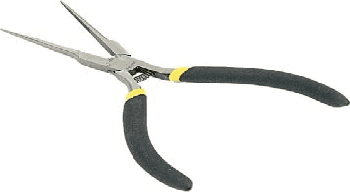
These pliers have long and sharper jaws and hence the name long nose or needle-nose pliers. These types of pliers find application where the area is very narrow or small. These types of pliers are used by jewellery designers and artisans. They are also known as pointy-nose or snipe-nose pliers.
Bent nose Plier
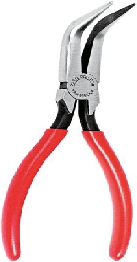
These pliers find applications in jewellery making and repairing. The nose of this plier is bent to an angle that is usually 45 degrees. We can recognize and identify these types of pliers by looking at their curved beak.
Locking Plier
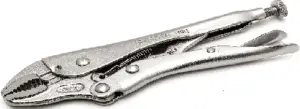
In such types of pliers, the locking mechanism used is an over-centre toggle action for locking into a certain position. They find a wide range of applications in the manufacturing and design industries. They are constructed in such a manner that one handle contains the bolt which is used for adjusting the space between the jaws. While the other side of the handle holds the lever which can unlock the pliers.
Sheet Metal Plier
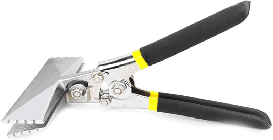
These pliers have unique rectangular jaws. These are used for bending metal sheets and also for the formation of seams. These find wide application in the manufacturing and sheet metal industries.
Canvas Plier
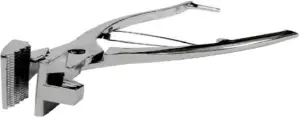
These are very important tool for all the artists who use canvas for their artwork. A rectangular strip is present on their jaws that can be used to hold the wires. A spring is fitted between the two handles. They are also known as canvas stretching pliers.
Crimping Plier

Crimping pliers have fulcrum attached to them at one end and handle attached at the other end. It works similar to a nutcracker. These are basically used in the field of telecommunication. They are also used for the transmission of data through a connector in the networking domain.
Bail making plier

The jaws of such pliers have two cylindrical rods where one rod is slightly larger than the other. They are used in the making of delicate things like jewellery. They are also used for making ear wires and clasps.
Battery Plier

These are used in the automobile industry for maintenance of the bolts on the battery. These can also be used for top-post and also side-post battery terminals.
Brake Spring Plier

These pliers are very common tools in a mechanic shop and are used to handle the brakes. One jaw of the Brake Spring Pliers is rounded while the other is used for inserting.
Combination Plier
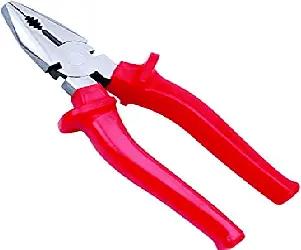
These types of pliers have serrated jaws and each of the jaws is rectangular in shape. They work similar to a scissor and are used for cutting, gripping, bending and twisting. They can also be used in removing the insulations of the wires.
